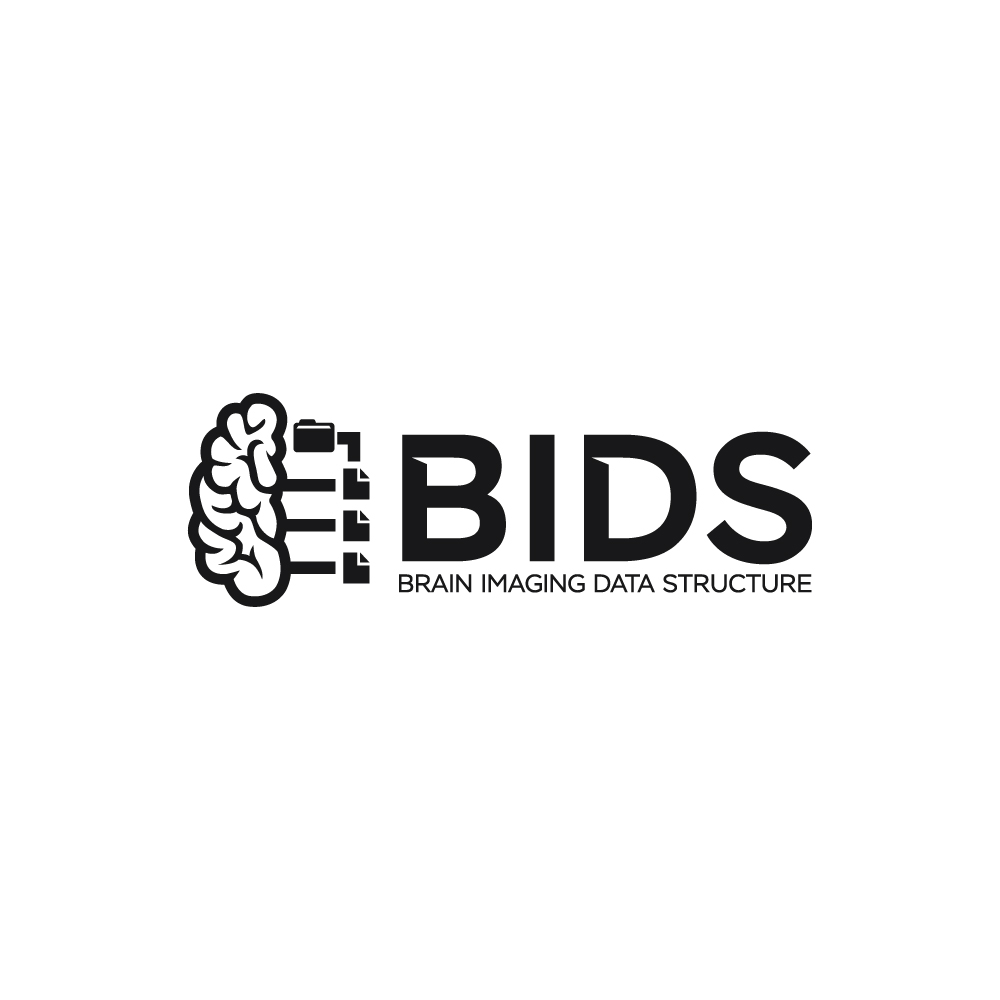BIDS Derivatives
Contents
BIDS Derivatives#
Derivatives are outputs of common processing pipelines, capturing data and meta-data sufficient for a researcher to understand and (critically) reuse those outputs in subsequent processing. Standardizing derivatives is motivated by use cases where formalized machine-readable access to processed data enables higher level processing.
The following sections cover additions to and divergences from “raw” BIDS. Placement and naming conventions for derived datasets are addressed in Storage of derived datasets, and dataset-level metadata is included in Derived dataset and pipeline description.
Metadata conventions#
Unless specified otherwise, individual sidecar JSON files and all metadata fields within are OPTIONAL. However, the appropriate use of these files and pertinent fields is very valuable and thus encouraged. Moreover, for some types of files, there may be one or more required metadata fields, in which case at least one metadata file containing that field must be located somewhere within the file’s hierarchy (per the Inheritance Principle).
When chaining derivative pipelines, any JSON fields that were specified as mandatory in the input files SHOULD be propagated forward in the output file’s JSON provided they remain valid. Non-required JSON fields MAY be propagated, and are highly useful, but it is the pipeline’s responsibility to ensure that the values are still relevant and appropriate to the type of output data.
File naming conventions#
Filenames that are permissible for a raw BIDS data type have a privileged status. Any modification of raw files must use a modified filename that does not conflict with the raw filename. Further, any files created as part of a derivative dataset must not match a permissible filename of a valid raw dataset. Stated equivalently, if any filename in a derivative dataset has a name permissible for a raw BIDS data, then that file must be an identical copy of that raw file.
Each Derivatives filename MUST be of the form:
<source_entities>[_keyword-<value>]_<suffix>.<ext>(where<value>could either be an<index>or a<label>depending on the keyword; see Definitions)When the derivatives chain involves outputs derived from a single raw input,
source_entitiesMUST be the entire source filename, with the omission of the source suffix and extension. One exception to this rule is filename entities that are no longer relevant. Depending on the nature of the derivative file, the suffix can either be the same as the source file if that suffix is still appropriate, or a new appropriate value selected from the controlled list.There is no prohibition against identical filenames in different derived datasets, although users should be aware of the potential ambiguity this can create and use the sidecar JSON files to detail the specifics of individual files.
When necessary to distinguish two files that do not otherwise have a distinguishing entity, the
_desc-<label>keyword-value SHOULD be used. This includes the cases of needing to distinguish both differing inputs and differing outputs (for example,_desc-T1wand_desc-T2wto distinguish brain mask files derived from T1w and T2w images; or_desc-sm4and_desc-sm8to distinguish between outputs generated with two different levels of smoothing).When naming files that are not yet standardized, it is RECOMMENDED to use names consistent with BIDS conventions where those conventions apply. For example, if a summary statistic is derived from a given task, the file name SHOULD contain
_task-<label>.
